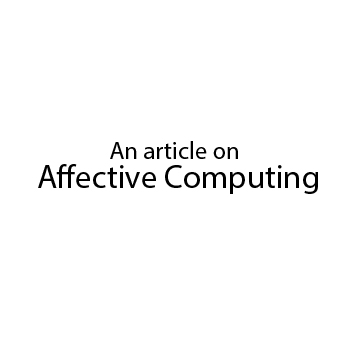This wide ranging, ambitious, topic ranges work from several disciplines, including impressive results, theoretical analysis and practical applications along with some of the ethical issues they raise. The majority of the discussion of emotions is based on the widely held assumption that they always involve externally detectable sentic modulation, as primary emotions do. This assumption, however, ignores the possibility of secondary emotions, which I believe are the most important emotions in our lives and certainly of most interest in much of our thinking about one another. From this viewpoint the emphasis on externally detectable patterns of physiological processes is unfortunate. However as an account of how primary emotions and some peripheral secondary emotions are expressed and how they might be detected it may be a good beginning. There are numerous application which are challenging and potentially extremely interesting and probably very difficult applications of affective computing e.g. automating the process of searching a library for a picture or a piece of music with a specific type of mood, for use in an advertisement or as background. Although there are some shortcomings, there is a lot of interest and value in the topic of people around the world. As a wide-ranging and provocative ground-breaker, the domain is new and presently we cannot believe everything we read! Even though the text and bibliography points to much relevant literature, the best literature on this topic has yet to be written. Such work requires a broad multidisciplinary background. Unfortunately there are still too few researchers like Picard willing to combine psychology, ethology, neuroscience, evolution, computer science, software engineering, AI and philosophical insight, in the context of creative engineering design. Maybe one day their numbers will reach a critical mass, they will discover a common conceptual framework within which to communicate, and the subject will really take off






